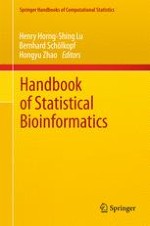2011 | OriginalPaper | Buchkapitel
23. Inferring Signaling and Gene Regulatory Network from Genetic and Genomic Information
verfasst von : Zhidong Tu, Jun Zhu, Fengzhu Sun
Erschienen in: Handbook of Statistical Bioinformatics
Verlag: Springer Berlin Heidelberg
Aktivieren Sie unsere intelligente Suche, um passende Fachinhalte oder Patente zu finden.
Wählen Sie Textabschnitte aus um mit Künstlicher Intelligenz passenden Patente zu finden. powered by
Markieren Sie Textabschnitte, um KI-gestützt weitere passende Inhalte zu finden. powered by
